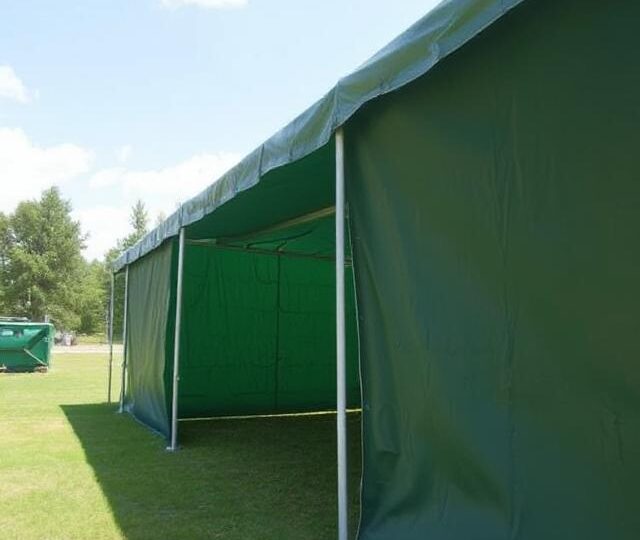How Cover Materials Improve Longevity and Protection
October 22, 2025 | by IoT Development Company

When it comes to protecting valuable items, whether at home, on a farm, or in a commercial setting, the right cover material can make a huge difference. Covers are not just about keeping things dry—they play a key role in extending the life of your equipment, supplies, and belongings. In this article, we will explore how different cover materials improve both longevity and protection, helping you make smarter choices for your needs.
Why Covers Matter
Covers provide a simple yet effective way to protect your items from the elements. Sun, rain, snow, dust, and wind can all damage goods over time. For instance, wood left outside without protection can warp or crack, metal can rust, and fabrics can fade. By using high-quality covers, you create a barrier that keeps moisture, dirt, and debris away. This not only keeps items looking better for longer but also reduces repair and replacement costs. Covers are also handy indoors, helping separate warehouse areas, protect equipment from dust, or serve as temporary partitions. Their versatility makes them valuable for homeowners, farmers, and businesses.
Different Types of Cover Materials
Choosing the right cover material is key to getting the protection you need. There are several options available, each with its own benefits:
-
Polyethylene Tarps: These are lightweight, waterproof, and budget-friendly. They work well for temporary protection, such as covering firewood, garden tools, or outdoor furniture.
-
Canvas Covers: Made from heavy-duty cotton, canvas is breathable and durable. It is excellent for items that need air circulation to prevent mold, such as machinery and wooden furniture.
-
Vinyl and PVC Covers: These covers are extremely tough and resistant to tears, water, and UV rays. They are ideal for long-term protection of vehicles, boats, and large equipment.
-
Polyester Covers with Coating: These often feature extra layers or coatings for water resistance and sun protection. They combine flexibility with durability, making them useful for varied weather conditions.
Each material offers different benefits, so the best choice depends on what you’re covering, usage frequency, and the environment.
How Materials Improve Longevity
The main way cover materials improve longevity is by shielding items from damaging elements. Here’s how:
-
Water Protection: Moisture can cause rust, mold, and decay. Waterproof materials like polyethylene and vinyl keep water out, preventing these problems.
-
UV Resistance: Sunlight can fade colors and weaken fabrics. Covers with UV-resistant coatings block harmful rays, keeping your items in good condition.
-
Durability Against Wear and Tear: Some materials, such as heavy-duty canvas or coated polyester, can withstand strong winds and friction. This durability ensures that the cover itself lasts longer, which means your items remain protected.
-
Temperature Control: Certain cover materials can reduce heat buildup under the cover, which is essential for sensitive items like electronics or painted surfaces. By maintaining stable temperatures, the material helps prevent warping, cracking, or fading.
Using the right material makes a noticeable difference in how long your items last. Poor-quality covers can wear out fast, leaving items unprotected and causing extra costs.
Protection Beyond Weather
Covers also protect items from things other than the weather. Dust, dirt, and debris can accumulate and damage surfaces or equipment. Animals may also chew or scratch uncovered items. By selecting the proper cover, you reduce these risks significantly. Covers help businesses keep warehouse and outdoor items clean and organized, while homeowners can protect furniture, firewood, and seasonal goods. On construction sites, heavy-duty covers safeguard materials like cement, lumber, and tools, keeping projects on track and within budget.
Choosing the Right Cover
When selecting a cover, consider these factors:
-
Size: The cover should be large enough to fully protect your items, but not so big that it drags on the ground. A proper fit extends the life of both the cover and the item underneath.
-
Strength: If you need maximum durability, materials like vinyl or coated polyester are best. For lighter protection, polyethylene tarps work well.
-
Weather Conditions: Consider the climate and environment. In rainy regions, waterproofing is essential. In sunny areas, UV resistance is a priority.
-
Usage Frequency: If the cover will be used frequently, a stronger, tear-resistant material will last longer and provide better value.
For heavy-duty applications, products like heavy-duty, large cover tarps are ideal. They combine strength, waterproofing, and UV resistance, making them a reliable choice for protecting large equipment, vehicles, or construction materials.
Caring for Your Covers
Even the best cover materials need proper care to last longer. Here are some tips:
-
Clean Regularly: Remove dirt, leaves, and debris to prevent mold and material breakdown.
-
Dry Before Storage: Moisture can cause mildew or weaken the fabric, so always let the cover dry completely.
-
Store Properly: Fold or roll covers and store them in a dry place when not in use.
-
Check for Damage: Repair small tears or holes promptly to prevent them from growing.
By maintaining your covers, you not only extend their life but also ensure that the items underneath remain protected.
Conclusion
Covers are essential for protecting your belongings and extending their lifespan. Whether it’s waterproof tarps, durable canvas, or coated polyester, choosing the right material depends on your needs and environment. They guard against weather, dust, UV rays, and wear, helping reduce replacement costs. In the USA, Tarps Plus provides high-quality covers that offer lasting protection. Using and caring for the right cover keeps your items safe and durable, making it a smart, cost-effective investment.
RELATED POSTS
View all



